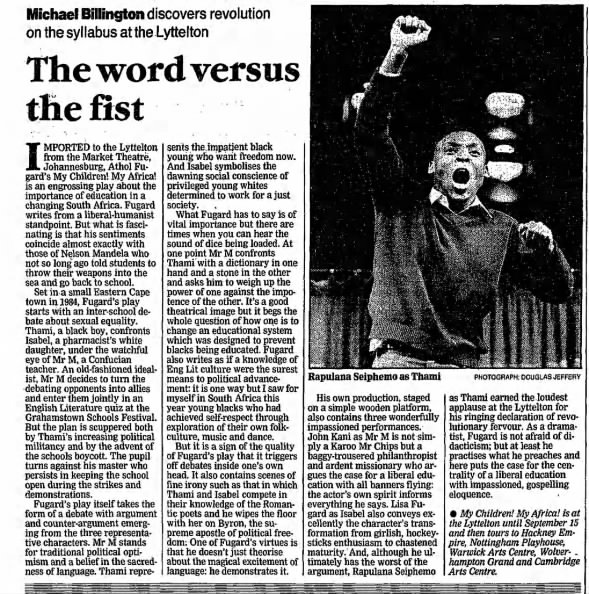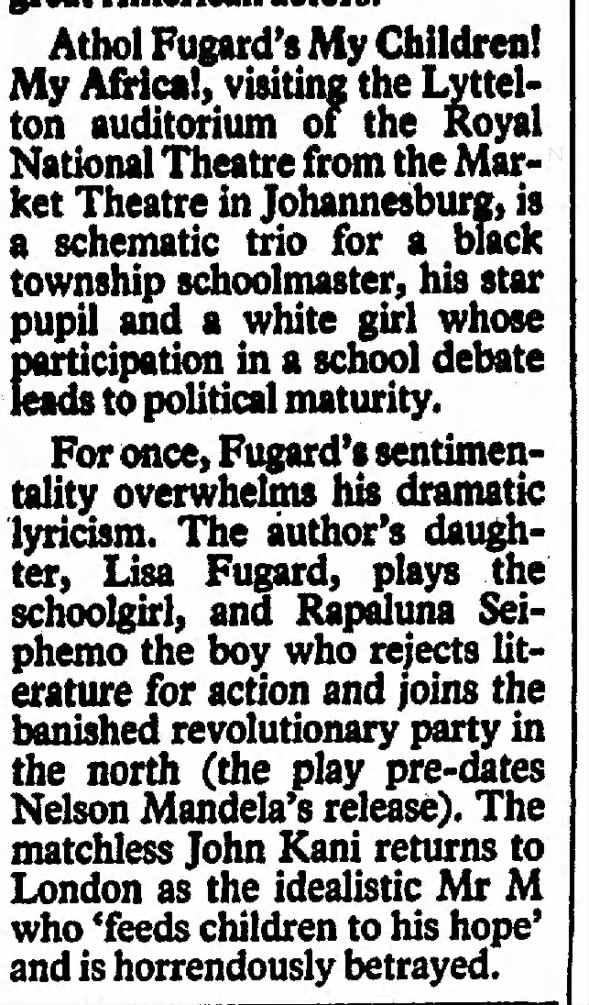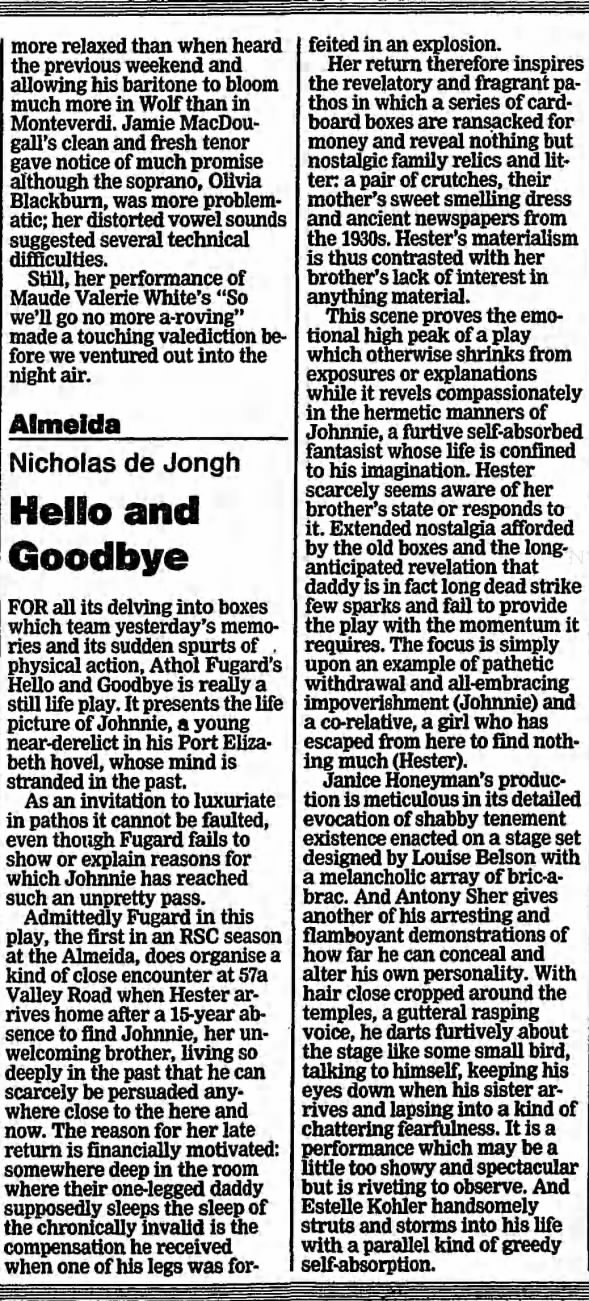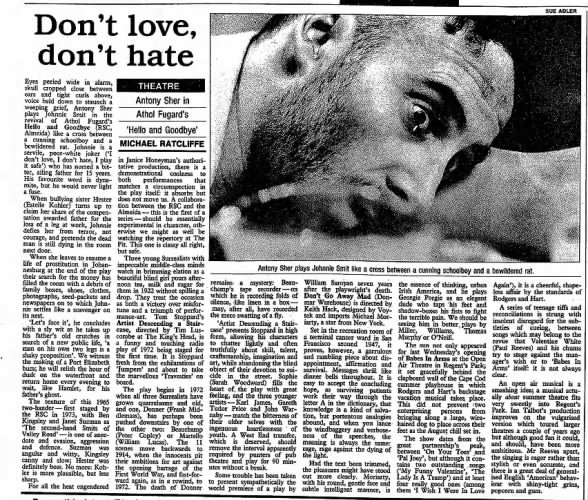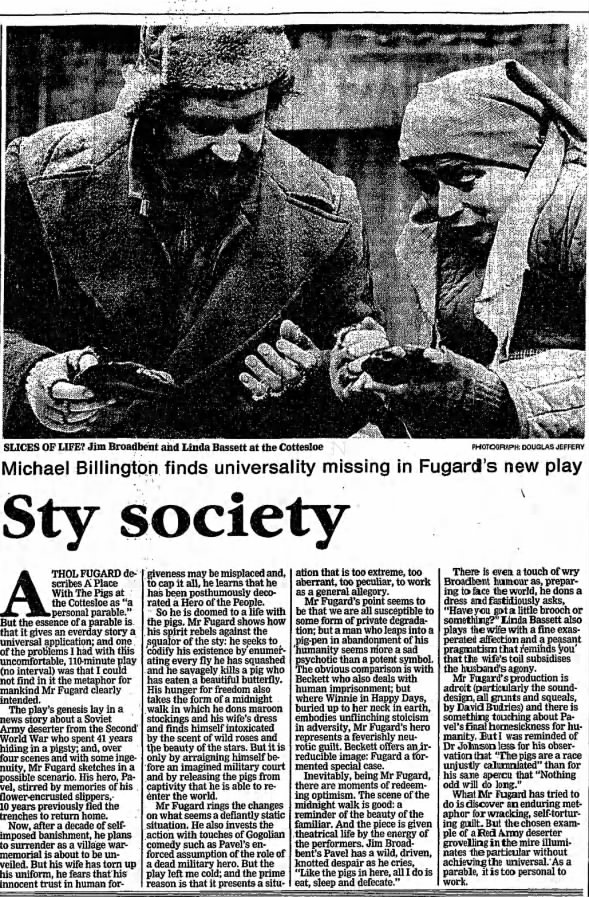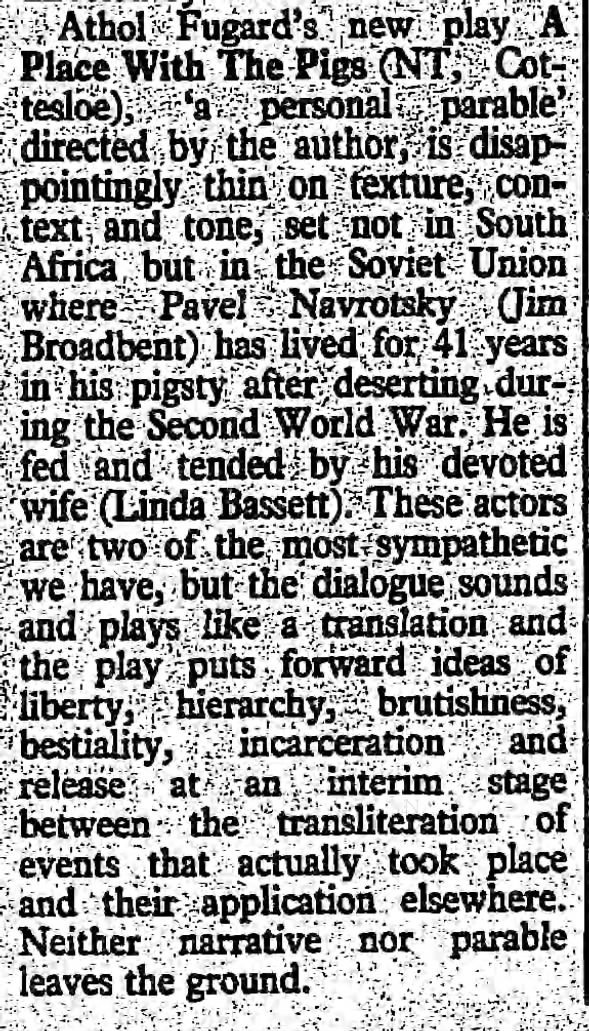You wait years for an Athol Fugard to come to London and then, what do you know, two come along at the same time. Like buses, are Athol Fugard plays.
We saw A Lesson From Aloes last week at the Finborough and mighty fine it was too:
Blood Knot at the Orange Tree was also excellent, but if I was only going to see one of these productions, I’d personally choose Aloes, both for the play and for the production.
We saw a preview of Blood Knot, but I think my comments will apply throughout the run.
Blood Knot is a relentlessly grim play. The play is about two half-brothers in Port Elizabeth who are Cape Coloured, to use the hateful vernacular of the South African Apartheid regime. One is light-skinned and could pass for white, while the other is dark-skinned and is more likely to be regarded as black.
The poverty and hopelessness of the brothers’ situation pervades the whole play. The brothers are extremely well portrayed by Nathan McMullen and Kalungi Ssebandeke.
Click here or the picture below for the Orange Tree web resources on this production.

But the play is very slow. Especially the first half. Let’s be honest about this – and I am an Athol Fugard fan saying this – Fugard plays tend to start very slow. Lengthy periods of scene-setting and atmosphere-generating are intrinsic to Fugard’s style.
Blood Knot is especially slow to build. It is an early work and I think Fugard himself would admit that his craft as a playwright improved with experience.
It was a ground-breaking piece in its time; 1961. Fugard himself played Morrie and was testing the boundaries of Apartheid law; loopholes which for a while allowed white and black actors to appear on stage together.
All this and more about the horrible history of racist laws, South African colonialism and the Cape Coloured community are explained in fascinating essays in this production’s programme. I don’t often specifically commend a programme but this one I found hugely informative and interesting.
At the start of the interval, Janie pondered leaving before the second half, but then came round to the idea of seeing the production through.
By the end of the evening, she was really pleased she decided to see the second half – as was I. Still not racey, but the piece makes far more sense as a whole and the second half answers at least some of the questions at a reasonable lick.
Not the very best of Fugard, but still very much worth seeing.








